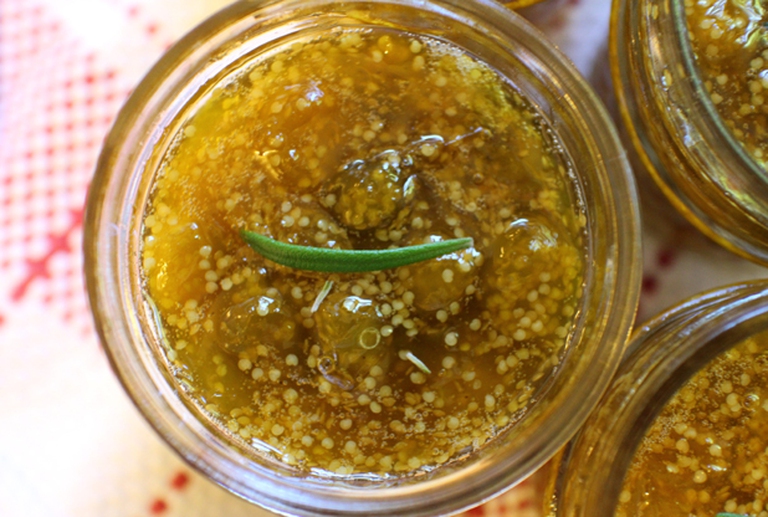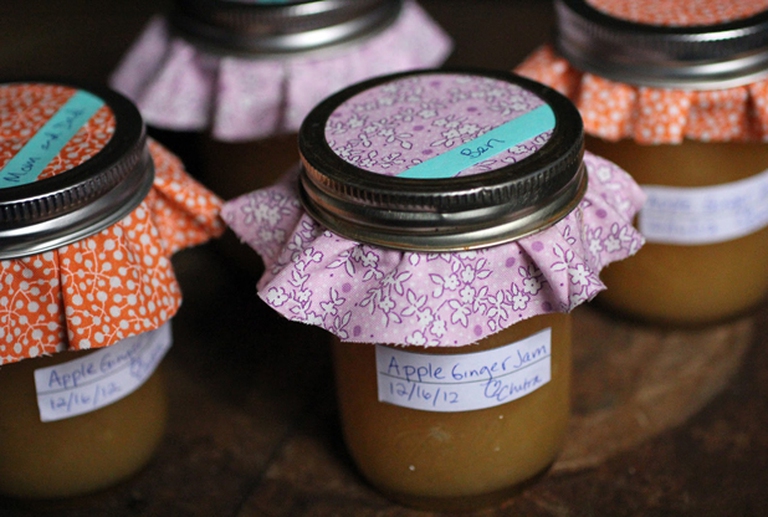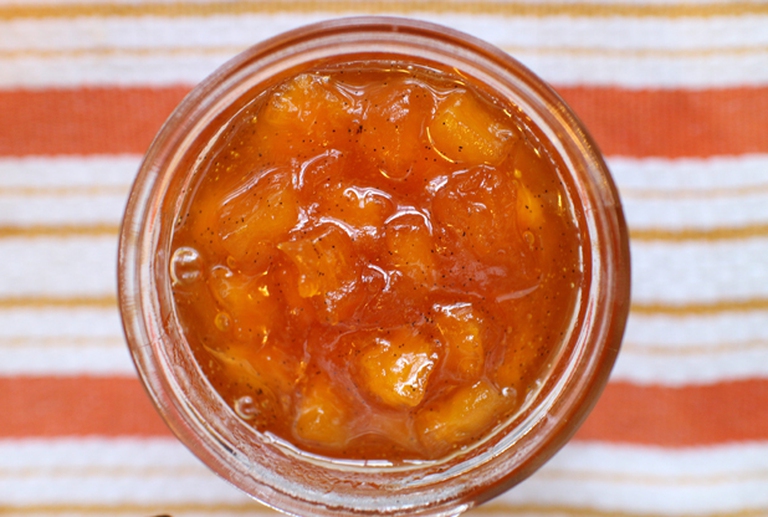
Factory farming conditions and antibiotic-resistant pathogens emerging as a result of them pose an existential threat to humans in the form of zoonotic diseases. Why it’s time to produce and consume food more thoughtfully.
Marmalades and jams can be spread on toasts or tarts, but are also luscious with cheese and other peculiar savoury matchings. Here is a selection of easy and delicious recipes.
Figs and rosemary

1 kg of figs, 300 g of whole brown sugar, 2 sprigs of rosemary, juice of 1 lemon. Peel the figs and mince them. Pour into a pot half a litre of water with the sugar and bring to a boil until you obtain a syrup. Add the figs, chopped up rosemary and lemon juice. Cook for about half an hour, mixing in the meantime. Do the plate test (see instructions below) to see if the jam is ready and if it is so, fill the already sterilised and dried jars. Close well and sterilise again in boiling water for half an hour. It is ideal with aged cheese and spread on toasts at breakfast with a thin layer of ricotta.
Apples, lime and ginger

1 kg of peeled pippins without core, 300 g of whole brown sugar, 3 limes (or 2 lemons), 3 teaspoonful of fresh grated ginger. Cut the apples into small chunks and put them into a nonstick pot with sugar, the peel of one of the limes, lime juice and ginger. Simmer and let the sugar melt, then increase the heat and bring to a boil. Let it boil, stirring in the meantime, until there is no more liquid. Turn down the heat and simmer for a few minutes. At this point do the plate test. Pour into the sterilised and dried jars, close and turn upside down for a few minutes. Perfect with green fish dishes or with soles.
Black grapes and cinnamon

1.2 kg of black grapes, 50 cl of brown sugar syrup, 2 cinnamon sticks. Clean the grapes accurately. Use a vegetable mill to remove the seeds and the skin. Put the brown sugar syrup and the cinnamon in a shallow, large and wide-bottomed casserole. Boil for 5 minutes than add the grapes and mix well. Cook for about 45 minutes over medium heat mixing from time to time with a wooden spoon. When the jam becomes syrupy, pour it into sterilised jars, than close hermetically, turn upside down and let them cool down. Excellent with goat’s cheese or ricotta. Suitable for cooking lean meat.
Squash and cardamom

1 kg of butternut squash; 300 g of whole brown sugar; peel of 1 lemon; 5-6 cardamom seeds. Peel the squash and cut it into chunks. Put it into a pot with 2 glasses of water, sugar, powdered cardamom seeds and lemon peel. Simmer and mix over and over again until the sugar melts. Cook for about 40 minutes, then, do the plate test to check the consistency of the jam. When it is ready, blend it in a hand blender and pour it immediately into the jars. Close hermetically and turn the jars upside down, then, wrap in a blanket and let them cool completely. Try it with some toasts with pecorino cheese and, in general, with aged cheese.

Jam or marmalade?
The word marmalade defines a product made from citrus fruits and prepared with at least 20 percent of fruits. These include orange, lemon, tangerine, clementine, grapefruit, citron and bergamot marmalade. The preserves obtained with all other fruits (except from citrus fruits) are called jam or extra jam according to the amount of fruits they contain and the type of processing they undergo. Jams are those prepared with at least 35 percent of fruit, while extra jams contain at least 45 percent.
The plate test
It is useful to check if the jam or marmalade is ready to be put into a jar. You just need to place a drop of marmalade in the centre of a plate and let it cool for a moment: if it trickles quickly and it is too liquid, you still need to boil it for a few minutes. Repeat the procedure until the drop will fall slowly.
Siamo anche su WhatsApp. Segui il canale ufficiale LifeGate per restare aggiornata, aggiornato sulle ultime notizie e sulle nostre attività.
![]()
Quest'opera è distribuita con Licenza Creative Commons Attribuzione - Non commerciale - Non opere derivate 4.0 Internazionale.
Factory farming conditions and antibiotic-resistant pathogens emerging as a result of them pose an existential threat to humans in the form of zoonotic diseases. Why it’s time to produce and consume food more thoughtfully.
The world of cinema recognises the link between food choices and the climate crisis by offering vegan menus for awards season events, including at the most important of them all: the Oscars.
Let’s look at the reasons behind the growth of veganism in India, as a small yet vocal section of the population turns towards this diet and lifestyle in the largest milk producing country in the world.
by Jeffrey Y. Campbell, Manager of the Forest and Farm Facility at FAO In the Ecuadorian Amazon, Kichwa farmers grow dozens of products on tiny parcels of land. Their lands hum with biodiversity, yielding nutritious foods that have sustained families for generations. Wandering among fruit and nut trees and crops, these indigenous agroforesters fill their baskets
Mint has many health benefits, but in food it’s often accompanied by artificial green colourings. Instead, Galatea has created a green mint ice cream in a completely natural way.
We’re talking about Galatea, a company that produces semi-finished products for artisanal ice creams using high quality ingredients, natural colouring, excluding thickeners and hydrogenated fats, respecting the environment and supporting the less fortunate.
The mad rush to fake food, like fake meat made with genetically-modified soy, ignores the importance of the diversity of our foods and culinary cultures. It’s a recipe to accelerate the destruction of the Planet and our health.
Like with all foods, the quality of an ice cream can be discerned by reading its label. An expert explains how to do this, and tells us how their company steers clear of chemicals, using only natural ingredients to produce an excellent and “free” ice cream.
Quality ingredients, no artificial colouring and hydrogenated fats. These are the main features of a great ice cream. But what makes an ice cream parlour “good”, i.e. sustainable?







